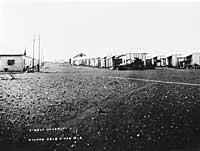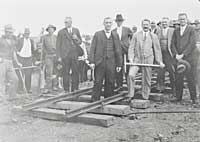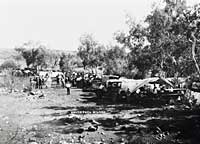History
Lawrence Wells conducted the first European exploration of the Wiluna region in 1892 before  prospectors Woodley, Wotten and Lennon first discovered gold near Wiluna on St Patrick’s Day 1896. The discovery of gold caused a ‘gold rush’ to the area and the birth of the township of Wiluna.
prospectors Woodley, Wotten and Lennon first discovered gold near Wiluna on St Patrick’s Day 1896. The discovery of gold caused a ‘gold rush’ to the area and the birth of the township of Wiluna.
The town of Wiluna was originally named Weeloona before the spelling of the name was later changed to Wiluna. The origin of the name Weeloona has not been determined, although it is thought to have been derived either from a native word meaning “Place of Winds” or the sound of the cry of some native curlew birds in the area.
Gold mining in the area caused the town to thrive and prosper, with the population growing to over nine thousand people by the mid 1930’s. At its peak, the town had a regular railway service to Perth, four hotels and many other amenities and facilities.
The beginning of World War II had a severe impact on the gold mining industry and in turn upon the population of the town of Wiluna. Immediately after the war underground mining ceased in the area and gold operations were wound down to virtually nothing. By 1953 only 357 people remained in the area and by 1963 the population had dwindled down even further to about 90 people.
In 1981 gold mining recommenced in the Wiluna area, which began the resurgence in the industry that continues today. The pastoral industry in the region is producing quality cattle and sheep and experimentation in some agricultural ventures has occurred with some success.
The population of the town of Wiluna has in recent years stabilised at about 300 including a large population of indigenous Australians. According to the last Census, there are now approximately 1644 people living in the Shire including several mining villages, which are run mainly on a “fly-in fly-out” basis.
All photos from the collection of Barbara Quadrio